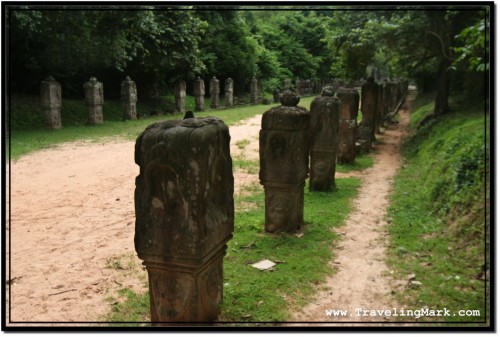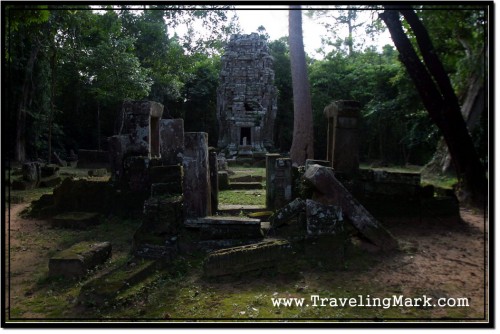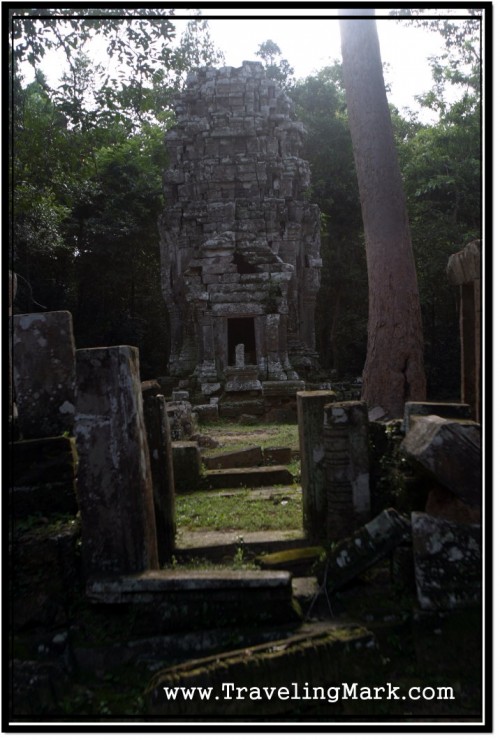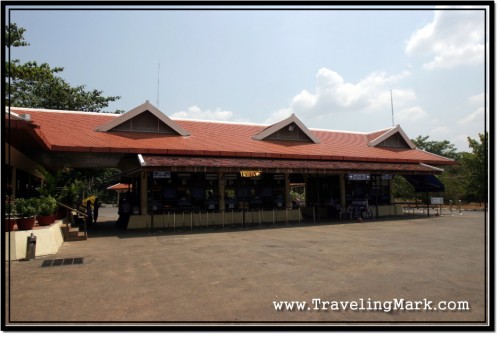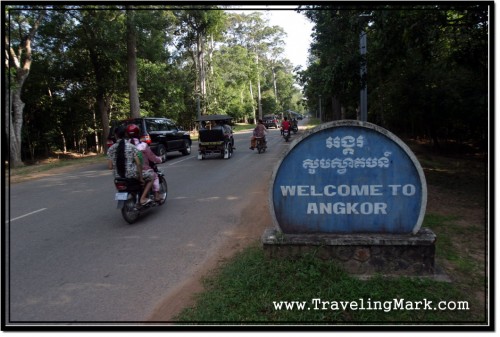A visit to the Neak Pean Temple was a refreshing change. This temple is nothing like anything else you’d find at Angkor Archaeological Park and that makes a visit to Neak Pean very uplifting. Even if you’re totally enthusiastic about the largest religious complex in the world and appreciate ancient architecture, the temples eventually all start looking the same because it’s only small differences that set one apart from another. However a visit to Neak Pean breaks this cycle of sameness apart and makes a weary visitor spry again. Though ultra intense sun and relentless touts can take even the most indestructible spark of enthusiasm and throw it right down to the depths of hell. So what makes Neak Pean so special?
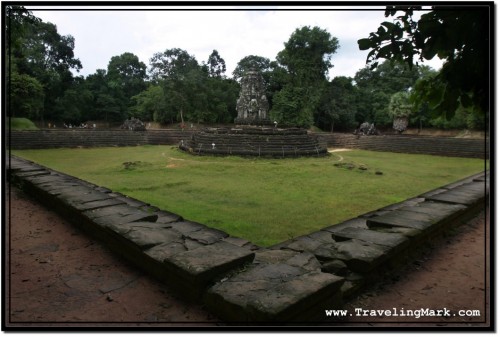
Because I wanted to cover the Grand Circuit of Angkor in one day, and have the rest of my 7 day entrance pass to use for more remote temples, the Neak Pean Temple marked the second half of my itinerary. It felt good knowing that by the time I got to Neak Pean, I was half way through my today’s challenge. The bad news was that when I got to Neak Pean, the day was at its hottest.
It is without doubt humanly possible to cover whole Grand Circuit on a bicycle in one day and have enough time to thoroughly explore each visited temple, however being in Cambodia, one needs to take into an account the mighty element that has the power to juice every last bit of energy an individual, regardless how strong and fit, has in them. Sheer exposure to the intense heat and merciless rays of the Cambodian sun can leave a person breathless, but if you try to engage in any kind of physical activity while the sun inexorably debilitates you, you’re in for the world of pain.
Yet it only gets worse. As if the struggle to keep going while the sun is incapacitating your every single cell was not enough, you also get constantly pressured by the relentless Cambodian touts who specialize in wearing tourists out until they end up giving in and buying whatever junk the touts have for sale. The good news is that the Grand Circuit is not as tout heavy as the Petit Circuit, the bad news is that those who do operate on the Grand Circuit are 10 times more aggressive (something you wouldn’t even believe was possible as any of the million and one touts who jump you on the Petit Circuit will have been the worst pests you have ever had to deal with in your life) because they don’t see the same number of tourists the Petit Circuit touts do each day.
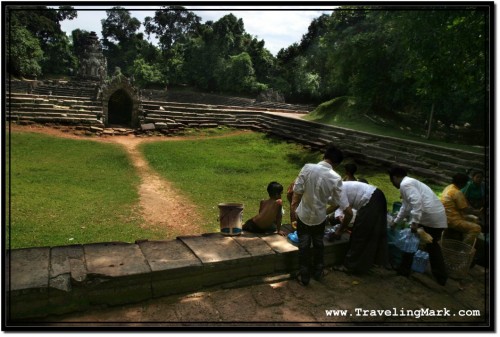
Up to this point, the tout infestation situation has not been that bad, which left me with enough energy to battle off the heat but the visit to the Neak Pean Temple marked the beginning of some of the worst pestering nightmares a person can go through – including an attempted bicycle theft at the largest temple on the Grand Circuit. Still, despite immeasurable heat and a half day of temple exploring on a bicycle behind me, I was very enthusiastic when I approached Neak Pean.
Neak Pean, The Temple
The first thing you notice when you come to the Neak Pean Temple is that it doesn’t make you look up, it makes you look down. Normally, every temple you visit would have the most attention grabbing bits built above the ground. Neak Pean has them below and that gives the temple its unusual feel which made me truly appreciate it.
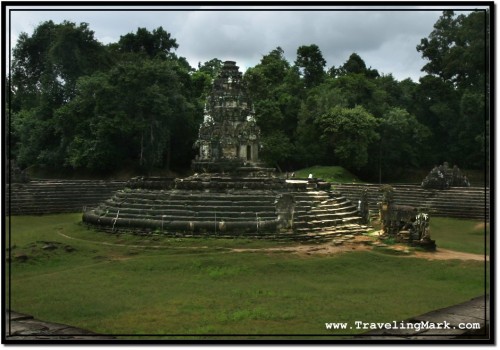
Granted, had East Baray not gone dry, Neak Pean would shy away before the body of water surrounding East Mebon. However, without the water there, East Mebon look just as another temple build in the middle of a large field. East Baray covered too large of an area to have its banks identified by a naked eye without the surface of the water guiding it. Even though built for a completely different purpose, Neak Pean is kind of like a mini East Mebon as it is also a temple built on an artificial island which was erected in the middle of an artificial pond and was back in the day surrounded by water.
Constructed by the great Khmer King Jayavarman VII, Neak Pean was designed to serve the medical purpose and was built to symbolize Anavatapta – the sacred lake in the Himalayas with healing powers – or at least so the scholar speculate. Many houses of healing (hospitals) were built during the reign of Jayavarman VII, but this one stands out. The pond (an inscription suggests it was named Jayatataka) serves as a central water source which distributes water to the four connecting ponds – similar to lake Anavatapta sourcing four great rivers. The rivers were said to issue water through the mouth of a Lion, an Elephant, a Horse and an Ox and so were the connecting ponds believed to represent Water, Earth, Fire and Wind.
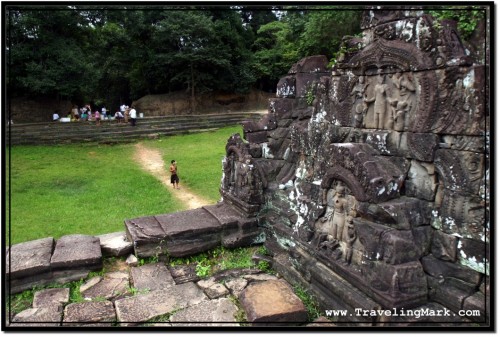
What’s even more impressive is that the entire Neak Pean area was originally an island of its own. Like East Baray, the water reservoir of Preah Khan once covered a large area of its own with an artificial island in the middle. The 300 meter square artificial island, housed the 70 meter square main pond, with four 25 meter square adjacent ponds at each of the main pond’s cardinal points. And in the centre of the main pond, King Jayavarman VII had a circular island of 14 meters in diameter built and used it as a base on which to erect what we know today as Neak Pean. The Neak Pean Temple is in other words a temple built on an artificial island which was built on an artificial island.
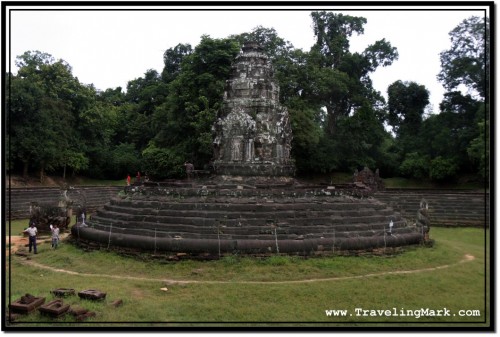
The pond in the middle of which the Neak Pean Temple is located is now dry, however it sometimes does fill with a bit of water after a heavy rain. My visit to Angkor was during rainy season and I ended up putting the visit off for over a week because it rained every day, however after three days without rain, there was not a drop of water to be seen anywhere in the main or surrounding four ponds. If you can time your visit to Neak Pean to be after the rain, you will get a chance to take pictures which look much better than mine. Not only does the ancient stone gain richer hues after rain, the little pool that builds up at the base of the pond will reflect the tower of the central temple offering superior photo opportunities.
